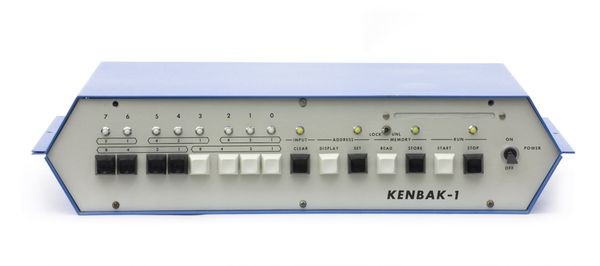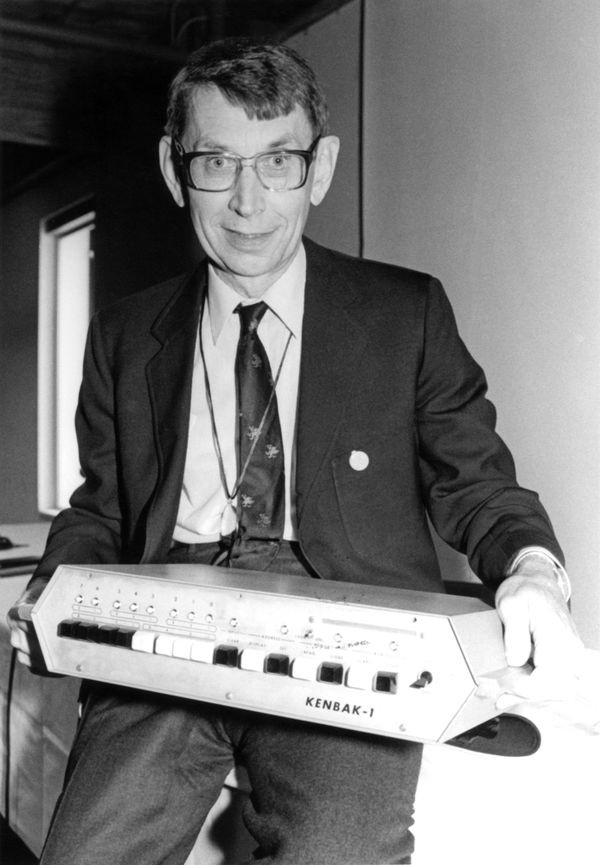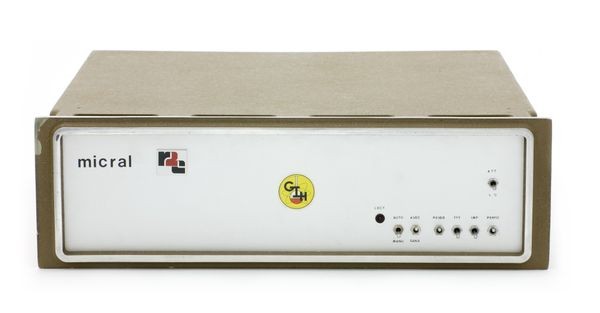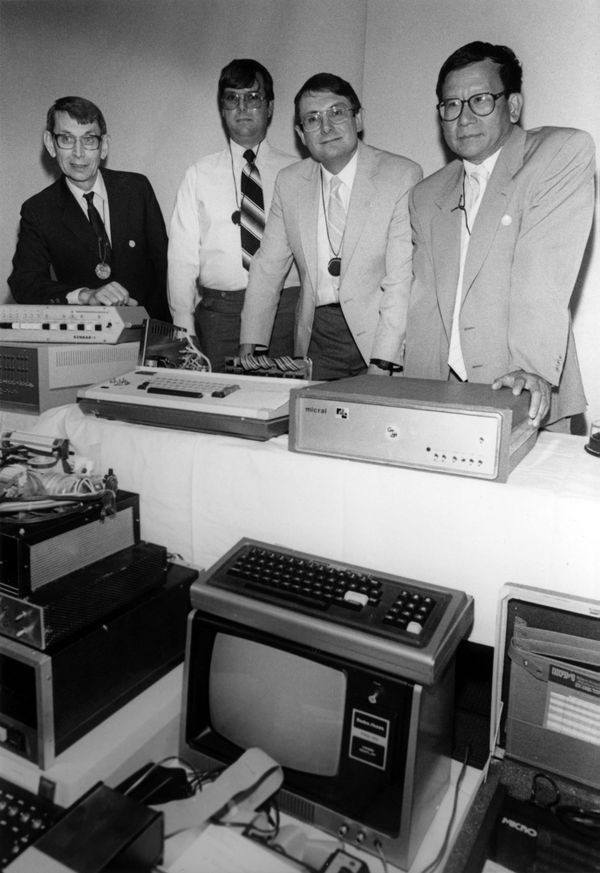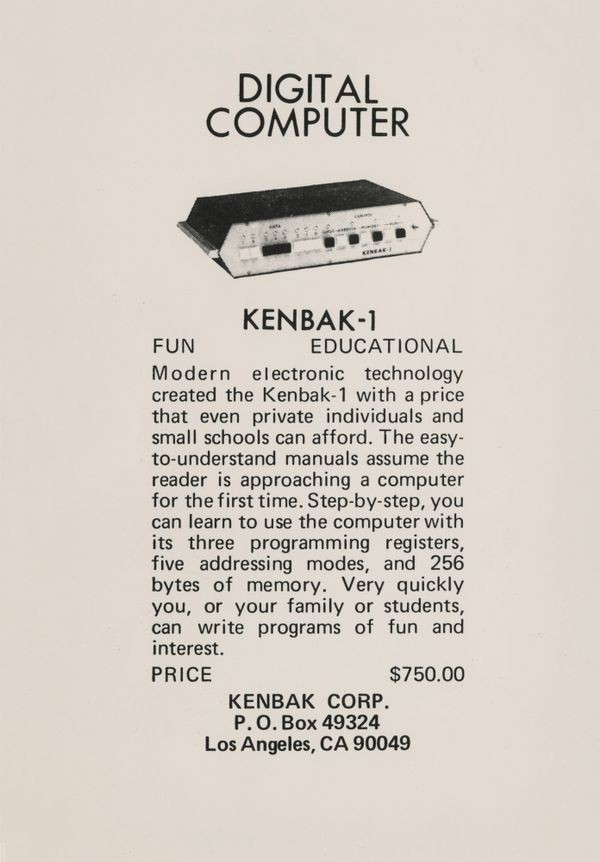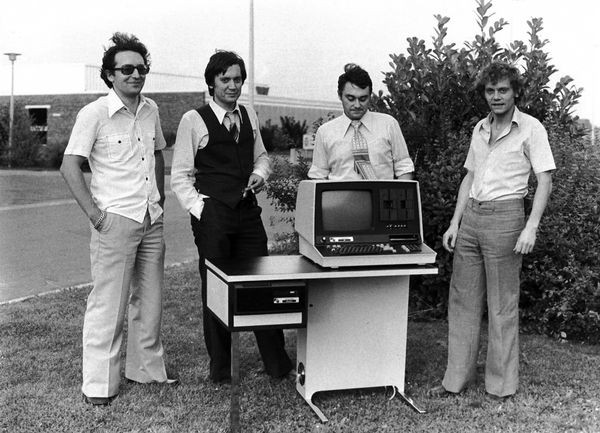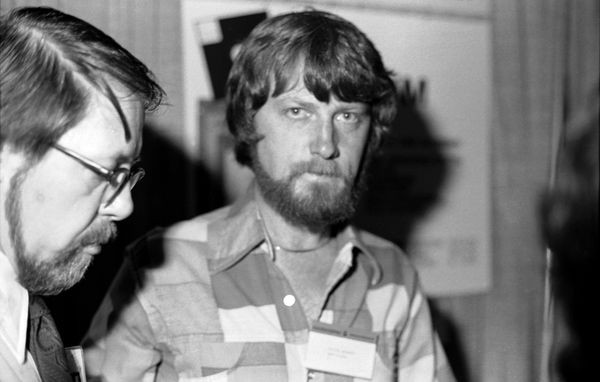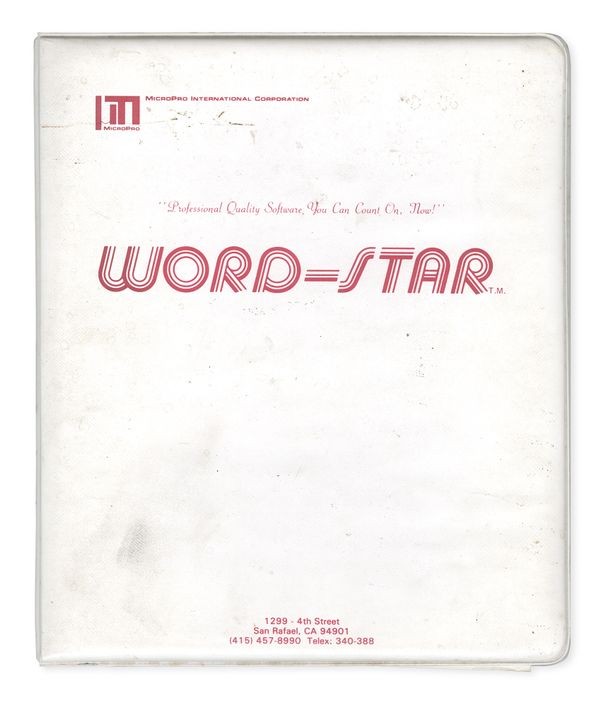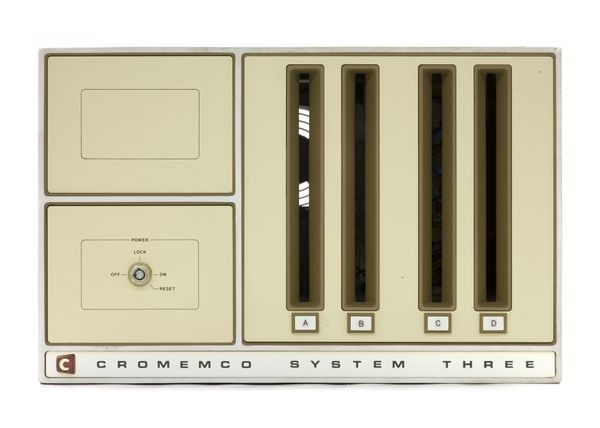What Was The First PC?
Kenbak-1
John Blankenbaker’s Kenbak-1, winner of The Computer Museum’s “Earliest PC Contest,” used small- and medium-scale integrated circuits, had switches and lights for input/output, and came with 256 bytes of memory. Kenbak Corporation folded in 1973 after selling only 40 computers.
What Was The First PC?
The Computer Museum in Boston asked that question in 1986, and held a contest to find the answer. Judges settled on John Blankenbaker’s Kenbak-1 as the first personal computer.
Designed in 1971, before microprocessors were invented, the Kenbak-1 had 256 bytes of memory and featured small and medium scale integrated circuits on a single circuit board.
The title of first personal computer using a microprocessor went to the 1973 Micral. Designed in France by André Truong Trong Thi and Francois Gernelle, the Micral used the Intel 8008 microprocessor.
John Blankenbaker with the Kenbak-1 computer
For most of the Kenbak Corporation’s three-year life, Blankenbaker was its only employee. His garage was company headquarters. Besides designing and building the computer, he wrote a reference manual, a theory of operation manual, and a 150-page lab exercise book.
View Artifact DetailMicral
André Truong Trong Thi and François Gernelle designed the Micral for process control. It was a $1,700 fully-assembled computer using the Intel 8008 microprocessor. A few were sold as personal computers, but most were used in real-time applications like tollbooths.
View Artifact DetailWinners of The Computer Museum’s Early Model Personal Computer Contest
Left to right: John Blankenbaker (Kenbak-1 designer); Robert Pond (Altair 8800 user); Lee Felsenstein (VDM-1 designer); and Thi T. Truong (Micral designer). Not shown: Don Lancaster (TVT-1 designer).
View Artifact DetailEPA Micro-68
The Micro-68 computer was a $385 kit that used the Motorola 6800 microprocessor. It had only 128 bytes of memory.
View Artifact DetailKenbak-1 advertisement
The Kenbak-1 was marketed to the scientifically-minded buyer “approaching a computer for the first time.” Available four years before the Altair 8800, it was not a kit, but a complete working computer for $750. Only about 40 were sold.
View Artifact DetailMicral C design team
The Micral C was sold as a "Small Business Microcomputer System" and was listed as "…a free standing system at home with any office décor." Left to right - Bernard Francina, François Gernelle, Jean-Claude Beckmann and Marcel Joubert.
View Artifact DetailScelbi-8B
Nat Wadsworth designed the first SCELBI (SCientific ELectronic BIological) computer for use in laboratories. The SCELBI-8B was a later version designed for business use.
View Artifact DetailControl Program for Microcomputers: CP/M
Gary Kildall developed the first commercially successful operating system for microcomputers, CP/M, in 1974. He and his wife established “Intergalactic Digital Research” (modestly dropping “Intergalactic” later) to market it. IBM approached the Kildalls about providing CP/M for its PC. Unfortunately for Digital Research, IBM decided to charge six times more for CP/M than for Microsoft's PC-DOS.
CP/M designer Gary Kildall at the first West Coast Computer Faire
Gary Kildall, who taught at the Naval Postgraduate School in Monterey, California, had a PhD in Computer Science from the University of Washington. In addition to writing the CP/M operating system, he designed a high-level programming language for microprocessors called PL/M.
View Artifact DetailWordStar Version 1.0
WordStar, among the first popular word processing systems for personal computers, originally ran on the CP/M operating system, and later on DOS and Windows. WordStar retained a strong following well after Microsoft Word had surpassed it.
View Artifact DetailIMSAI 8080
The IMSAI 8080, closely modeled on the Altair 8800, may be the first microcomputer “clone.” It was originally intended as a workstation in car dealerships, but that project was abandoned. It was featured in the 1983 film War Games.
View Artifact DetailCromemco System 3 Computer
Cromemco was founded by Stanford PhD students Harry Garland and Roger Melen. Their System 3 was a multi-user system for business and lab use, and ran Cromemco’s disc operating system (CDOS) as well as CP/M.
View Artifact DetailRelated Content
Read The Early Model Personal Computer Contest, from the Computer Museum Report, Volume 17, Fall 1986
